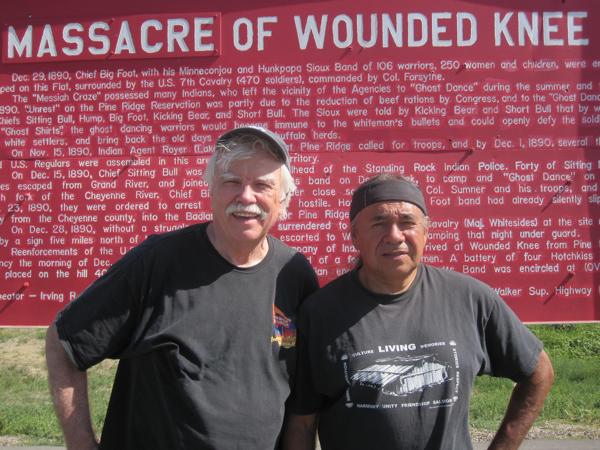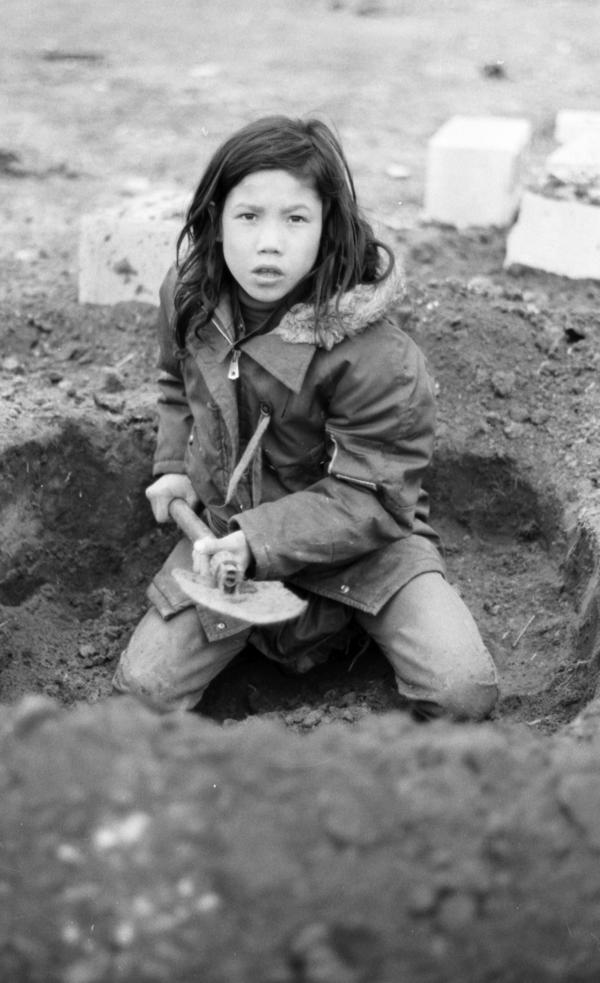‘Wounded Knee: A Line in the Sand’: Documentary to Show Never Seen Footage
Four decades ago, Kevin McKiernan made a decision that would change the course of his life.
Then in his late 20s, McKiernan was a cub reporter who had never seen combat, witnessed fatal gunfire or stepped onto an Indian reservation. That didn’t stop him from sneaking past FBI agents and U.S. Marshals in the winter of 1973 to embed with the American Indian Movement at Wounded Knee.
McKiernan was the only journalist bunking inside the compound after the federal government declared a media blackout.
“I didn’t know then that I’d disappear from my family for two months, that I’d be shot at by federal agents, assaulted by vigilantes, or that I’d come out of this place in handcuffs,” he said. “Maybe somebody had to get the inside story, but my heart was in my mouth.”
Armed with a backpack full of cameras, film and a tape recorder, McKiernan documented much of the 71-day occupation from the inside. He filmed what he would later call “a whole cycle of life”—babies being born, couples getting married, protesters being shot at and killed. McKiernan had to bury that film before he was arrested and charged for his involvement in the standoff, but he returned later to retrieve it.
Now, 42 years after the occupation, McKiernan, a veteran foreign correspondent and Pulitzer Prize-nominated documentary filmmaker, wants the world to see the inside stories. Since 2012, he and Oscar-winning cinematographer Haskell Wexler have shot 100 hours of footage on three reservations and conducted interviews in five states.
The film, “Wounded Knee: A Line in the Sand,” will include current commentary and perspectives along with footage that has never before been broadcast. It also will reveal McKiernan’s story as a white man—an outsider, a “privileged guest”—inside the compound.
The siege, which he called the “great Indian civil rights fight of the 20th century,” had an equalizing effect on everyone who shared blankets, cigarettes and stories during the long winter days, McKiernan said.
“I landed as if by parachute in the middle of a group of very poor people who were focused on a singular end,” he said. “I was there with a plate of runny beans every day. I lost 20 pounds and received very little compensation, but I shared in this joint experience where federal bullets didn’t discriminate based on skin color.”
The film also includes the narratives of several Native protestors at Wounded Knee, including Willard Carlson, Yurok, who traveled to Wounded Knee from California, dodging federal officers to transport weapons and ammunition.

Carlson, then 20, was a student at Humboldt State University when he learned about the occupation. He journeyed to Wounded Knee with a group of friends in March of 1973 and stayed for 34 days.
“This was Indian civil rights, Red Power, really exciting times,” he said. “What was happening in South Dakota was happening everywhere. We had to make a stand, bring attention to the plight of indigenous people.”
Carlson also had to decide what he was willing to sacrifice.
“Would we come out with guns blazing?” he said. “Would we get shot, go to prison, risk getting killed? We decided we were technically already at war, but if it came down to it, what would we be willing to do?”
These are the questions McKiernan tries to answer in his documentary. More than 200 armed protestors seized Wounded Knee to galvanize public support for Native rights at a time when America was already holding a mirror to its history of prejudice and inequality.

The occupation came less than a decade after John F. Kennedy was assassinated and the Civil Rights Act of 1964 became law. As young activists across the country continued to protest the Vietnam War, Natives took up arms to draw attention to police brutality and widespread corruption in their own communities.
Wounded Knee was “aching to happen,” McKiernan said.
“Here we had the poorest group in the U.S., and the most hopeless group,” he said. “These were people who were on their knees, looking to get up.”
By the time protestors surrendered, two Natives were dead and 18 were wounded. Two federal agents also were wounded. More than 500 individuals were arrested.

In the years after the occupation, things began to change. Congress took actions to preserve Native language and religion, protect sacred land and artifacts, restore rights to environmental resources and promote self-determination.
The occupation also changed everyone who was involved, McKiernan said.
Carlson returned to California, where he worked as an activist during the Klamath River Salmon War in 1978 and where he continues to be a voice of support for Native rights. McKiernan, who called the experience his “grad school in journalism,” went on to work in some of the world’s most dangerous areas, including West Africa, Syria, Iraq and El Salvador. He credits much of his success to the weeks he spent at Wounded Knee.
“From Wounded Knee I learned where the truth is,” he said. “If you want to take the temperature in America, it’s on the low road, not the high road. I learned to be interested in the stories of people who are at the very bottom.”
“Wounded Knee: A Line in the Sand” is in post-production stage and is scheduled to be released in 2015. McKiernan has launched a Kickstarter campaign to help raise the last $60,000 necessary to complete the documentary. The deadline to donate is December 8.

Read more at http://indiancountrytodaymedianetwork.com/2014/11/24/wounded-knee-line-sand-documentary-show-never-seen-footage-157959
